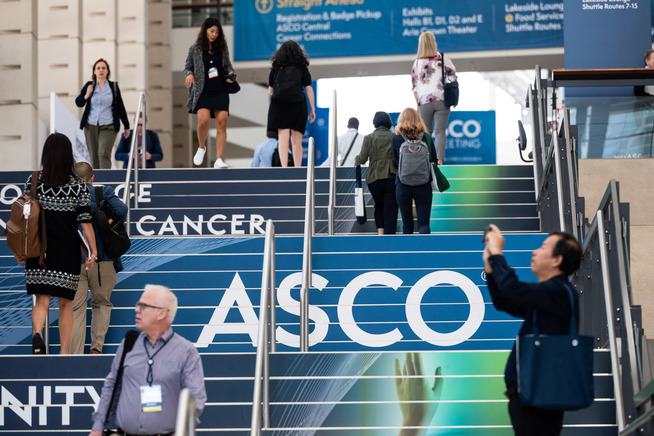To promote your brand and connect with new potential customers or clients, brand activations are a great marketing strategy to use. The brand activation experience helps introduce your brand to new people, catch people’s attention, and encourage action from your target audience. There are so many pieces that go into planning your brand activation presentation, it can be hard to know where to begin.
This article will provide you with a collection of tips, steps, and ideas that can be used to create your own brand activation strategy. Here’s an overview of everything covered in this guide:
- What is brand activation strategy?
- Six key components of the best brand activation strategy.
- How to build a brand activation plan?
Let’s begin by defining what brand activation strategy is, its purpose, and why you should consider using it as a marketing tactic.
What is brand activation strategy?

Brand activation strategy is the process of putting together interactive events, exhibits, or other experiences to introduce your brand to your target audience. These activations are designed to form memorable and meaningful connections with those in attendance, to generate media buzz about your brand, and build brand awareness.
There are several different pieces that go into creating the ideal brand activation plan, and many different ways you can present your activations. You can do in-person events, pop-ups, art exhibitions or retail stores, Guerilla marketing, mobile tours, and so much more. Your brand activations can be tailored to your brand and its offerings, as well as your marketing budget and target audience.
6 key components of the best brand activation strategy
Successful brand activation plans must have a few key components to ensure the strategy will work as intended. Here are six things your brand activation strategy should include.

1. Representation of your brand
The purpose of brand activation is to get your company name out there and connect with potential customers, so your activation strategy should consider how this activation will convey your brand’s personality, values, and message. Brand recognition should be one of your main brand activation objectives.
To accomplish this, your activation can include imagery of your products, use your brand’s colors, and other design elements that connect back to your company branding such as online resources or printed materials. You could also conceptually design your entire activation around a concept that aligns with your brand values and gets your brand’s message across.
2. Attention-grabbers
To entice people to check out your brand activation display or online posts, you’ll first need to capture their attention with some engagement-worthy bait. You can do this in many different ways, such as having eye-catching displays, raffles and contests, or even using other senses such as sound or smell. Including something that piques people’s interest, generates an emotional response, or surprises them in a positive way is a great idea for your brand activation proposal.
3. Memorable experiences
Going hand-in-hand with capturing the attention of your desired audience, your brand activation should include something that will make the experience memorable for your participants. This could be a unique interaction, fun game, product giveaway, photo opp, etc.
Your brand activation will be much more effective if it sticks in the minds of your target audience long after they leave your event, exhibit, or online display. Consider how you might make the experience more impressive or meaningful for your audience.
4. Calls to action
After they finish interacting with your brand activation, what is the next thing you’d like your audience to do? Do you want them to browse your website? Purchase a specific product or service from your company? Sign up for your mailing list? Think about all the actions you would like your audience to take, and integrate calls to action (CTAs) into the attendee journey that will get them to follow up with those things.
5. Shareability
Get the word out about your organization to more people than just those who directly interact with your brand activation display by enticing your audience to share photos or other posts about your event on social media. Having an Instagram-worthy photo opportunity that people will want to take photos with, running an online giveaway, or having a fun hashtag to use are all great examples of ways to make your activation more shareable and drive online engagement.
Use social media platforms to your advantage by encouraging your audience to create buzz about your brand and organically promote the campaign you’re running. This is an amazing way to exponentially increase the reach of your campaign, especially if you’re running something in-person and limited by geographic reach. Understanding where additional buzz is generated can also help you understand where you might want to host your next brand activation.
6. Lead generation
For many brands, having a way to get in touch with potential customers after an event is very beneficial. This can help facilitate sales or even grow your email list or social media following. Consider ways you might collect information from your attendees such as their name, contact information, product interests, or company information.
Generating leads through brand activations can be made easier by taking a transactional approach that is mutually beneficial for both parties; think about things you might provide to your attendees that they would want, such as a giveaway entry or free products.
How to build a brand activation plan
Now that you understand what the ideal brand activation strategy is composed of, here are some steps to follow to build your own customized brand activation plan for your organization.

Step 1. Define your brand
Before you get into the deep end of creating a plan for your brand activation, start by defining what your brand is all about. By this we don’t mean only what your brand does, but also what your company believes in, the values you hold, and even the type of voice your messaging uses. Describe every detail of your brand from top to bottom. This will help you define what exactly your activation strategy needs to represent. For many brands, a lot of this information is contained within a detailed brand guideline document to be used by anyone that touches your brand.
Step 2. Clearly define your goals
The next step in creating your activation plan is to lay out what your objectives are specific to your brand activation strategy. Are you trying to generate more sales? Go viral on social media? Disrupt the status quo of your industry? Get in touch with potential clients? Brainstorm and jot down every goal you might want to achieve, then narrow it down to what your main goals are. Quantifiable goals are best as you’ll also need to consider exactly how you will measure whether you’ve hit these goals when your campaign is finished. SMART goals are a great way to organize and structure your goal setting.
Step 3. Consider working with an agency
To get some extra help with your strategy, you can work with an agency that specializes in brand activations. Agencies like these can help you create your vision for your activation, draft a plan that fits your needs and your marketing budget, and ensure your event goes off without a hitch. Working with an experienced agency is one way you can ensure that you are asking yourself the right questions to answer for a better understanding of your target audience, brand offering, and strategic goals for your strategy. Agencies will also have helpful connections that can help you get vendors or sponsorship partners for your activation to make it even more impressive for your audience.
Step 4. Know your target audience
Think about the demographics of your target audience for this campaign. Who are these people? What are they interested in? What will catch their attention and get them excited? What problems might they have that your campaign or brand could solve? Jot down everything you know about your target customers and tailor your brand activation campaign according to their needs and wants. As an added suggestion, with this information look for ways to personalize the experience for even better results.
Step 5. Consider how your activation will catch people’s attention
Going along with knowing your audience, think about how your activation will attract the attention of that group of people you’re looking to engage. For example, if your brand creates products for children, the attention-grabbing elements you work into your activation will be very different than if your target audience is mainly middle-aged professionals Think about the things that will get your target audience excited about your brand and entice them to engage with your display or event.
Step 6. Design your calls to action
Next, let’s think about what actions you want your audience to take after interacting with your brand activation. Do you want them to sign up for your email newsletter, follow your company on social media, make a purchase, or maybe schedule an appointment with your team? Consider any and all actions you would like your audience to take, and how you will encourage and entice them to take those actions. Perhaps you mention an exclusive discount code they could get by signing up for your email list, a giveaway entry for following on social media, or a special deal they can unlock by buying your product at the event. Tell your audience exactly where and how they can accomplish the actions you want them to take.
Step 7. Use social media to promote your campaign
Throughout the brand activation lifespan you should use social media to promote your activation. Get people excited about your campaign, and even create hashtags your audience can use in their own posts about it! Social media is a great way to connect with your target audience remotely as well, as inevitably not everyone will be able to attend your activation in-person. You can also leverage social media to run giveaways, increase the reach of your campaign, and grow your following at the same time.
Step 8. Track, monitor and analyze results
During your campaign, you’ll want to track interactions that relate to your campaign objectives, like newsletter sign-ups, leads generated, number of sales connected to your activation, etc. Plan ways that you will track these interactions, set up and test prior to launch, monitor them throughout the activation, and analyze the results afterwards to help you determine whether your brand activation objectives have been achieved. This data will also help you better understand your target audience and aid in optimizing your strategy for any future campaigns.
That wraps up our rundown of brand activation strategy tips, components, and ideas. To ensure your campaign is successful, you can get in touch with Impact XM for specialized assistance, tailored event planning, sponsorships, custom production, execution, and much more!







